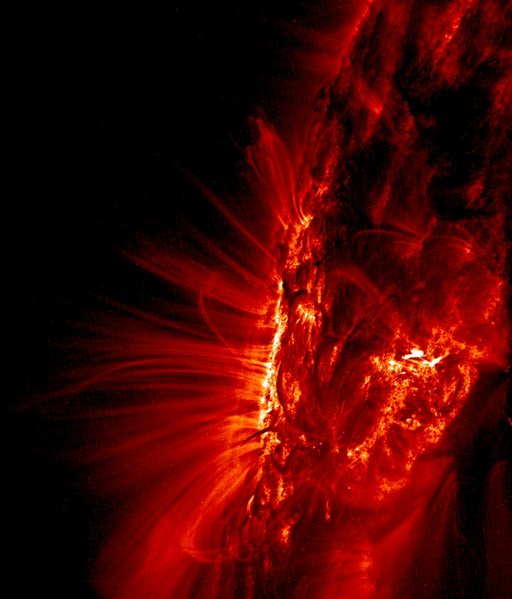A massive sunspot threatens Earth, and a solar outburst might create blackouts. The Sun is set to burst at any moment. Should we start worrying?

AR3055
AR3055, a giant sunspot measuring more than 6,100 miles across, has piqued the interest of solar experts. These patches appear as black moles on the Sun's surface and are magnetic flux-induced concentrations of relatively colder temperatures.
"There is an incredible-looking sunspot spanning the center of the solar disk, and a new huge black core has just emerged on the limb," astronomer Apollo Lasky said on SpaceWeather.com on Monday.
And it's practically squarely confronting the Earth, endangering our way of life.
According to SpaceWeather.com, which also published moving photographs of the area, researchers aren't sure if AR3055 expanded to its present size from a smaller, existing spot or rapidly formed on its own during the weekend.
Read also: Sun's Discharges: What are Solar Flares?
Sunspots
A sunspot like AR3055 might cause potentially harmful "M-class" solar flares and bursts of high-energy radiation that can continue for hours. M-class flares are considered modest in magnitude, yet they can cause radio blackouts both in space and on Earth.
Solar Flare Classification
We are awaiting the impact of a coronal mass ejection launched by an M1.6 solar flare that took place two days ago.
— SpaceWeatherLive (@_SpaceWeather_) October 11, 2021
The impact is expected to occur within the next 12 hours. A moderate G2 (Kp6) geomagnetic storm watch is in effect.
Follow it live on https://t.co/XHATH0OOfT pic.twitter.com/U9myFrgOrG
Solar flares are classed as A, B, C, M, or X based on their X-ray brightness. The letter A is the smallest, while the letter X is the largest and brightest. The recently recorded solar flare was the first X flare to be observed on the Sun's surface since the start of a new solar cycle in December 2019. The Sun has an 11-year cycle in which it swells to a peak amid the cycle and then begins to settle down until the end of the cycle, when it all repeats itself.
Flares are plasma discharges from the Sun's outer layer, known as the corona. When the shockwave, known as a coronal mass ejection, eventually hits our atmosphere - which takes about eight minutes - it causes geomagnetic storms with varying effects on satellites, GPS, and power grids in the areas it hits, as well as natural processes such as animal migration that rely on the magnetic field to navigate.
Flares are classed according to their strength, with C and B dropping below M and X being the strongest, capable of causing global outages and radiation storms.
The previous month, scientists warned of a probable radio silence lasting approximately 10-minutes due to sunspot AR3038, which caused the last M-class flare to endanger Earth.
Solar Flares
According to NASA, a solar flare is a powerful burst of radiation that occurs when magnetic field lines around sunspots tangle, intersect and rearrange.
How Dangerous
Although solar flares emit significant radiation levels, they are not hazardous to humans on Earth's surface. The geomagnetic storm may influence man-made electrical networks and satellites, but it will not affect people. Earlier in 1989, a powerful solar explosion knocked off electricity for nine hours in the Canadian province of Quebec, demonstrating the magnitude of the effect.
Related Article : Can We Survive a Catastrophic Solar Storm? What to do When a Solar Flare Hits Earth
For more cosmic news, don't forget to follow Nature World News!
© 2025 NatureWorldNews.com All rights reserved. Do not reproduce without permission.





